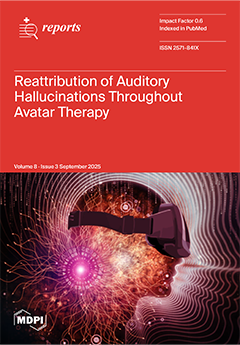Involuntary urinary leakage due to stress urinary incontinence in women represents a widespread health condition that reduces quality of life.
Background: Treatment with tension-free vaginal tape (TVT) remains the most used procedure, although its impact on quality of life, specifically regarding sexual
[...] Read more.
Involuntary urinary leakage due to stress urinary incontinence in women represents a widespread health condition that reduces quality of life.
Background: Treatment with tension-free vaginal tape (TVT) remains the most used procedure, although its impact on quality of life, specifically regarding sexual function effects, has not been thoroughly investigated. The aim of our study is to achieve a broader understanding of the full range of outcomes after surgery, emotional well-being, and sexual function.
Materials and Methods: The present prospective cohort study was conducted between 15 July 2023 and 15 June 2024 in the Emergency County Clinical Hospital Targu Mures, Department of Obstetrics and Gynecology. This is an investigation of TVT surgery and its impact on urinary incontinence, conducted by evaluating bladder dysfunction and sexual function before and after surgical intervention, as well as considering physical and psychological outcomes using specific questionnaires.
Results: There was a 91.7% objective cure rate for incontinence, while urinary symptoms, sexual function, and emotional health significantly improved, urine leakage associated with strong urgency (
p = 0.0002), urine leakage associated with coughing, sneezing, or laughing (
p ≤ 0.0001), and patient sexual activity and emotional health also improved after surgery (
p ≤ 0.0001). Furthermore, colorectal symptoms improved.
Conclusions: This study emphasizes that for the best recovery of sexual and emotional health post-surgery, complete symptom removal is a requirement. Additionally, the significance of combined questionnaires in assessing treatment efficacy is highlighted. A larger sample size of patients and a longer follow-up are required before recommending this procedure as a standard treatment.
Full article





